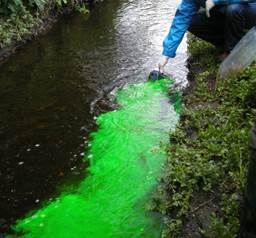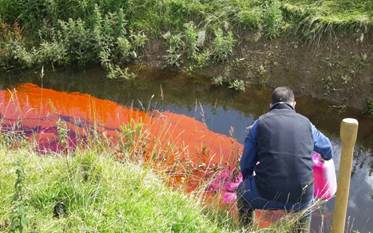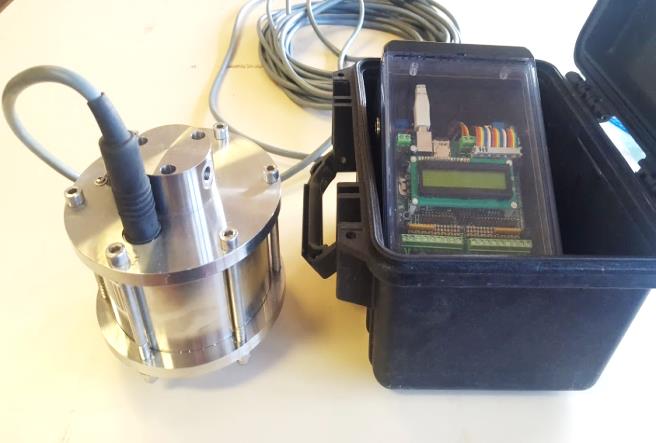Water tracing is a special method of investigation, usually used in karst aquifers. It is used to reveal information about underground connections, groundwater velocities, flow directions and aquifer properties. Water tracing simply involves 'tagging' water as it enters the karst system and monitoring possible exits to see where it re-emerges. The time taken for the tracer, and hence the water, to get from one point to the other is usually recorded.
Dyes
Tracers such as chaff and sawdust have been used or centuries, but it was not until the 1870s, with the invention of uranine (fluorescein) that the first reliable, water soluble tracer occurred. Dyes are the principal and most successful tracers used today and are used in approximately 90% of all karst traces carried out worldwide. The main advantages to using fluorescent dyes are:
- They are cheap and readily available.
- They can be detected at concentrations up to 6 orders of magnitude lower than the visibility threshold (1 part per trillion is possible using a scanning spectrofluorometer).
- Charcoal grains adsorb the dye and can be left in the spring to safeguard against missing the dye in water sampling.
- As different fluorescent dyes each have separate emission wavelengths dyes can be simultaneously injected into the karst system and separately identified, yielding much more information with the same sampling time.
Four main groups of dye are commonly used today:
- optical brighteners
- green dyes
- orange dyes
- blue dyes.
GSI uses various different fluorescent dyes, often for simultaneous injection.
 |  |
| Uranine dye being injected in a swallow hole near Ennis, County Clare. | Rhodamine dye being injected into a swallow hole in County Roscommon. |
Fluorometers
Often is it not ideal for the dye to be visible at the outlet point (such as a public water supply source). The advantage of using fluorescent dyes is that they can be detected in water at concentrations far below visible concentrations. A fluorometer is used to analyse water samples for concentrations of the dye. They can measure the intensity of light at a selected wavelength from a water sample containing a fluorescent substance. As each dye emits light at a specific and unique wavelength , spectro-fluorometers are especially useful for differentiating different dyes in a single sample in a multi-trace experiment.
GSI has a Cary Eclipse Scanning spectro-fluorophotometer, which is used to detect very low concentrations of dye (and other substances) in water and charcoal samples.
GSI also has three automatic field through-flow fluorometers (scanning spectro-fluorophotometers) and data loggers, which enable continuous monitoring of output locations at extremely high resolution (seconds) and are capable of continuously monitoring up to three different dyes, along with turbidity, temperature and electrical conductivity.

A Cary Eclipse Scanning spectro-fluorophotometer used for analyses of water samples for fluorescent dyes (and other substances).

A GGUN-FL30 field fluorometer and data logger in double waterproof housing.
A GGUN_FL30 continuous field fluorometer and data logger being set up at a spring, Lough Gur, County Limerick.